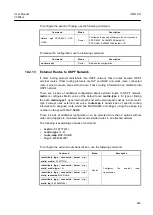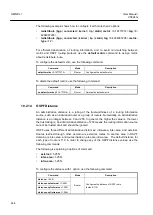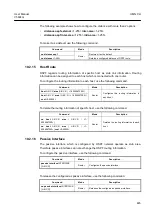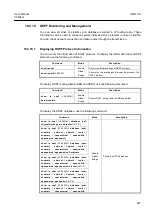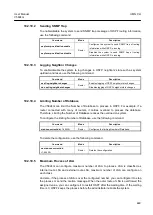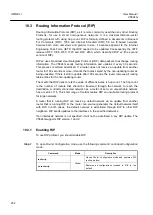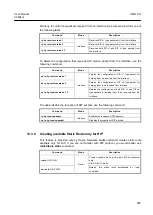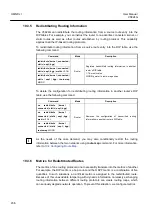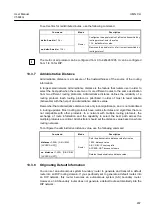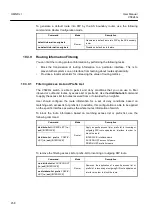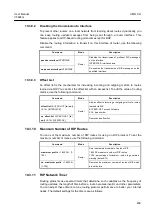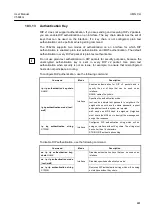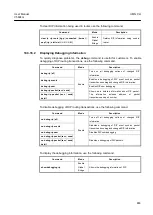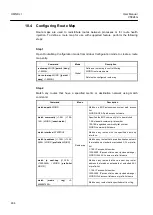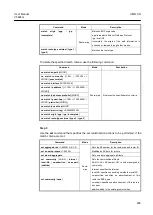
User Manual
UMN:CLI
V5824G
453
Step 2
Configure the network to operate as RIP.
Command
Mode
Description
network
{
A.B.C.D/M
|
INTERFACE
}
Router
Establishes the network to operate as RIP.
A.B.C.D/M: IP prefix (e.g. 35.0.0.0/8)
INTERFACE: interface name
no
network
{
A.B.C.D/M
|
INTERFACE
}
Removes a specified network to operate as RIP.
The command
network
enables RIP interfaces between certain numbers of a special
network address. For example, if the network for 10.0.0.0/24 is RIP enabled, this would
result in all the addresses from 10.0.0.0 to 10.0.0.255 being enabled for RIP.
By the way, it
’s not possible to exchange the RIP routing information if it hasn’t been
established RIP network using
network
command even though interface belongs to RIP
network. RIP packets with RIP routing information is transmitted to port specified with the
network
command.
After RIP is enabled, you can configure RIP with the following items:
•
•
•
Creating available Static Route only for RIP
•
Redistributing Routing Information
•
Metrics for Redistributed Routes
•
•
Originating Default Information
•
•
•
•
•
•
•
•
10.3.2
RIP Neighbor Router
Since RIP is broadcast protocol, routers should be connected each other to transmit the
routing information of RIP to non-broadcast network.
To configure neighbor router to transmit RIP information, use the following command on
Router Configuration
mode.
Command
Mode
Description
neighbor
A.B.C.D
Router
Configures a neighbor router to exchange routing
information.
A.B.C.D: neighbor address
no neighbor
A.B.C.D
Deletes the neighbor router.





